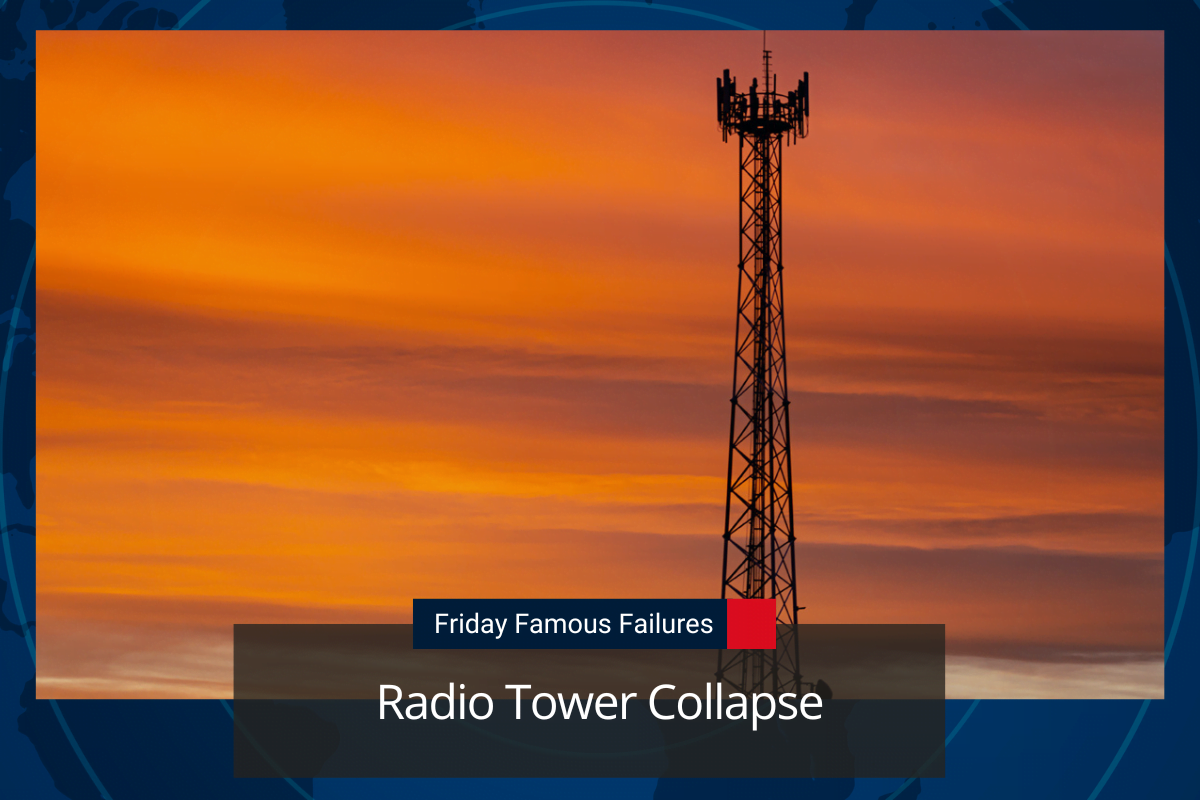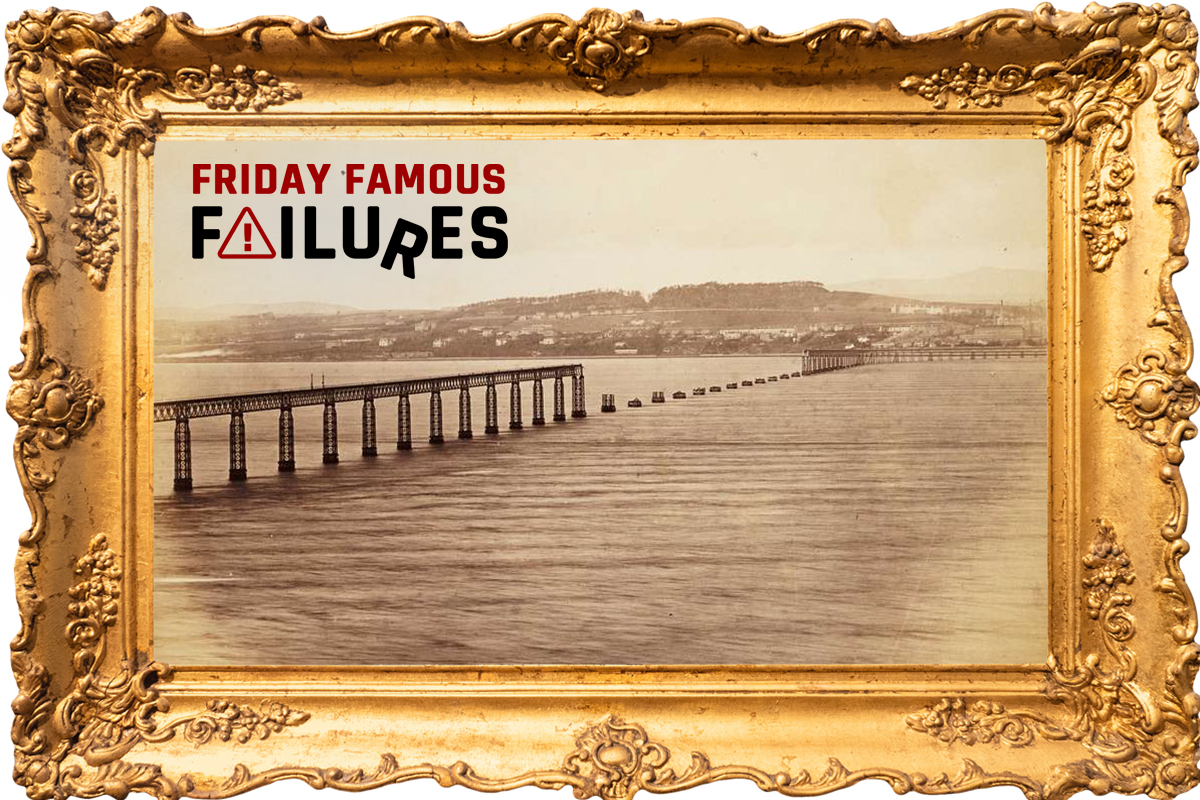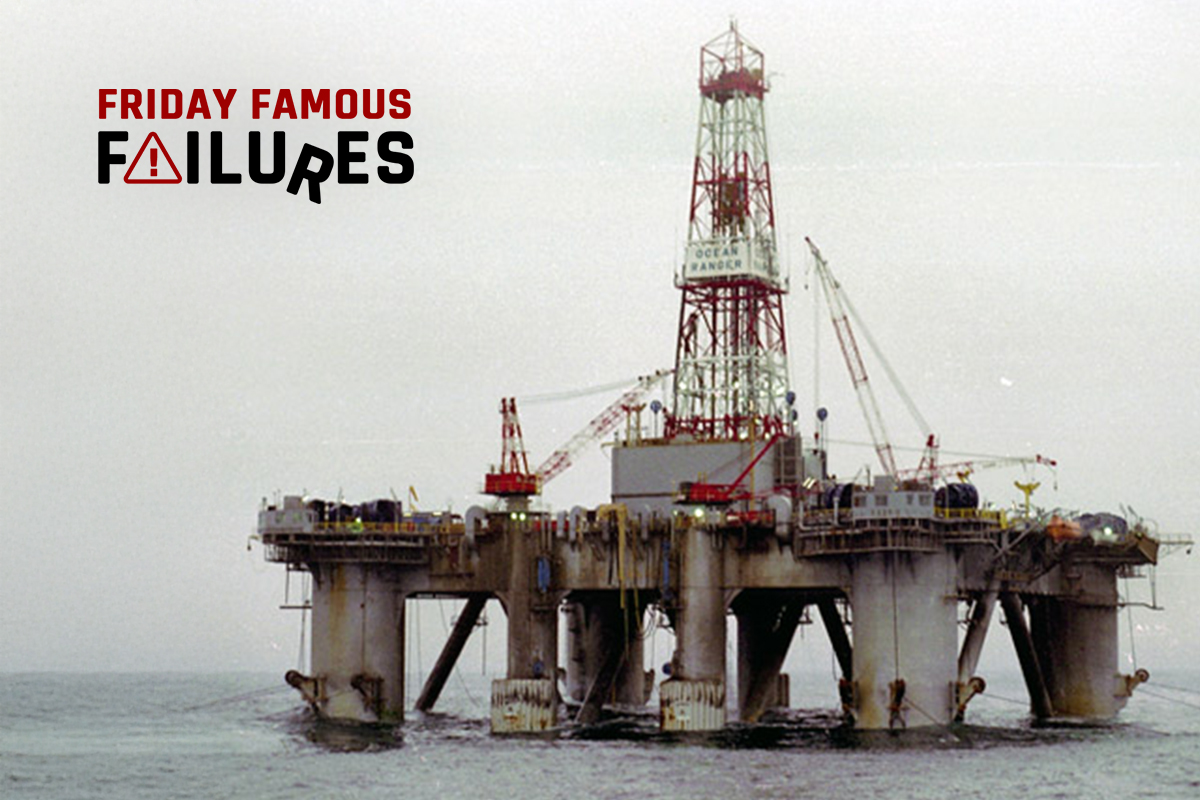On December 7, 1982, engineer Andy Hurdack was recording the installation of a new 1800-foot tower that would serve the airwaves of the surrounding areas of Missouri, Texas. The Senior Road Tower Project, a part of KTXH-TV, operated the tower and several radio stations. The mast was in the final stages of construction. As Andy recorded the raising of the last section of the tower, the supporting bolts suddenly failed, and the entire section fell, cascading a thousand feet to the ground. On the way down, the falling section sheered away guy wires and caused the entire structure to topple. Several riggers fell 1000 feet to their death.
The only sounds on Andy’s tape were his anguished, “Oh, my God!” and several seconds of the roaring collapse. “I heard something snap,” he said later. “Then the tower started falling. I just put my gear down rather hastily and got out of the way.” Because the collapse was caught on camera, the film has provided engineers and scientists the opportunity to closely examine the event. This disaster raised ethical questions about the behind-the-scenes engineering decisions that were made by the parties involved. So, how did these decisions lead to the accident? And what led to this case being one of the most widely debated ethical engineering cases to date?
The antenna was designed and manufactured by Antenna Engineering, Inc., a moderately sized local firm. A smaller local firm, Riggers, Inc., was contracted to raise and assemble the antenna. During the initial design stages, Antenna Engineering proposed plans to Riggers for their approval, and Riggers approved the plans. These plans contained instructions for the placement of the antenna hoisting lugs, which provided attachment points for the lifting cables that would be used to remove the antenna sections from the delivery truck and to hoist the antenna into the air for the final assembly.
A crew of riggers with years of experience in similar projects was on-site during construction. To help construct the tower, the crew used a vertically-climbing crane mounted on the already-constructed portion of the tower to lift each new section. To complete the construction, the crew would then use this crane to help mount the two-section antenna onto the top of the tower. The design called for a three-legged tower, and as each new section was lifted, it was positioned and bolted onto the previous tower sections. The tower legs were 8-inch diameter solid steel bars; each tower section weighed approximately 10,000 pounds.
When the final antenna sections arrived, the project had gone off without incident; however, the last section of the antenna was different because it had microwave baskets attached to its sides. While the placement of the hoisting lugs allowed the antenna to be lifted horizontally off the delivery truck, the baskets interfered with the lifting cables when the antenna was rotated to a vertical position.
A few weeks before the incident, Riggers approached Antenna Engineering and asked if it was possible to remove the microwave baskets on the top 100-foot section of the tower so they could lift the antenna into position. Once lifted into position, Riggers proposed to reinstall the baskets after the section was in place. Antenna Engineering responded that removing the baskets would void the warranty.
While Riggers had seen and approved the initial plans drawn up by Antenna Engineering, they did not have the same technical expertise as the engineers at Antenna Engineering. While they were skilled tradespeople, the employees of Riggers were not Professional Engineers.
Riggers then requested the help of the chief engineer at Antenna Engineering to review their plans for lifting the antenna without removing the microwave baskets. The engineer at Antenna Engineering refused to approve, or even review, the design. Instead, after consulting with the firm, the engineer decided that by saying anything to Riggers, Antenna Engineering would assume liability in the case of an accident. Antenna Engineering essentially stated that their job was to design and build the antenna, and Riggers was responsible for assembly.
Without Antenna’s consultation, Riggers proceeded with their plan. They attached a long channel to the antenna section with several U-bolts. In this plan, Riggers hoped that by attaching the lifting cables to the end of the added steel section, the antenna section could be raised vertically without obstruction from the microwave baskets. They used bolts that they believed were of the proper strength, but they did not realize that the piece of steel they attached also added a large weight, which was spread through the U-bolts. In the end, seven people died as a result of this tragic and inadequate design flaw.
Findings From The Investigation
After the incident, an investigation found that when designing the makeshift lug extension, the rigging crew underestimated the load on the lugs by a factor of seven. This engineering mistake compounded the risk created by proceeding with the assembly of the last tower section even though the presence of microwave receivers made the intended assembly procedure impossible.
In addition to these mistakes, the investigation found malfeasance: the u-bolts used by the rigging crew for the lug extensions, which were the actual point of failure in the accident, were rated by their manufacturer for twice the load they could actually withstand.
The investigation highlighted the following ethically irresponsible decisions associated with this tragedy: lack of responsible engineering in jury-rigging the lug extensions without proper engineering review, the miscalculation of the mechanical load of the assembly method, and the u-bolt manufacturer’s misrepresentation of the u-bolt rating. An argument could be made that Antenna Engineering has some culpability here, too. This disaster would not likely have happened if Antenna Engineering had accounted for constructability considerations in their original design.









Construction ability should always be a prime consideration during design. Antenna engineers should be held accountable for poor design and failure to review the erection plan revisions necessitated by their refusal to allow removal of the badkets
Antenna Engineering should have incorporated a means to erect their antenna in a safe manner. If that means removing the microwave brackets, so be it. I believe this is their responsibility. What good is a new antenna if it can’t be erected safely? Riggers is ultimately responsible for this accident.
Antenna Engineering should have stepped in to help with the assembly. By walking away from the issue because of so-called liability, they contributed to the disaster.
Also, Riggers should’ve insisted that Antenna Engineering help with the new design approach and hired them for this portion of the work.
I think a strong argument could be made for Antenna Engineering having some culpability. Antenna Engineering owed the purchaser a lifting and rigging plan to permit a safe installation. Every large bulky piece of equipment I can recall purchasing includes such plans in the installation and operating manual, unless such manual was not included in the contract. Their refusal to either supply a plan, or review the rigger’s plan, seems like negligence to some extent. That would be for a judge and jury to decide based on all of the evidence.
I agree with the 4 opinions stated above, in that Riggers, as described here, made some extremely bad mistakes, and they should probably bear the major blame for this failure. What appeared to be simple off-the-cuff guessing about some obviously major issues would not be excusable, regardless of any previous actions that might have resulted in the situation facing them. As for the extent to which Antenna Engineering bears some responsibility, I think it depends on what they were told to do and what information they were provided. I agree with Anacker, in his earlier comment, that this would need to be decided based on all of the evidence. One can easily imagine that the specifications to the antenna supplier did not detail the entire structure and assembly process. In any case, I am left wondering if there was an engineer with responsibility for the whole project. If so, he would first bear responsibility for the failure. If not, the buyer of the structure in the outset should be responsible.